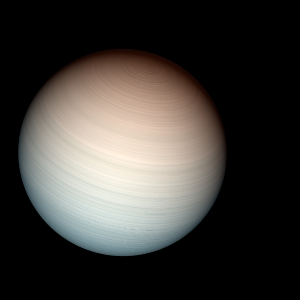|
|
Space Astro
|
Info for exoplanet "Sycothone Si"
| Scientific (actual) data |
|---|
| Name | KMT-2016-BLG-2364 b |
| Planet status | Confirmed |
| Planet mass | 3.93 |
| Semi major axis | 2.63 |
| Discovered | 2020 |
| Updated | 2020-08-24 |
| Publication | Published in a refereed paper |
| Detection type | Microlensing |
| Mass measurement type | Microlensing |
| Star name | KMT-2016-BLG-2364 |
| Right ascension | 265.72° |
| Declination | -27.44° |
| Star distance | 6440 |
| Star mass | 0.5 |
| Wikipedia article | KMT-2016-BLG-2364 b |
Back
| |
| Fictional info (?) |
|---|
| Suggested name | Sycothone Si |
| Planet type | Large cold gas giant |
| Because of its rapid rotation, the planet's shape is that of an oblate spheroid (it has a slight but noticeable bulge around the equator).
Its north and south poles, therefore, lie where most other planets have their equators. |
| Atmosphere | Ammonium hydrosulfide (NH4SH) | 95% |
| Carbon monoxide | 3.7% |
| Methane | 0.26% |
| Carbonyl sulfide | 1.7E-5% |
| Atmospheric pressure | 23 bar |
 |
| No known satellites |
| Google search for Sycothone si |
|
Website by Joachim Michaelis
|
|
|
|